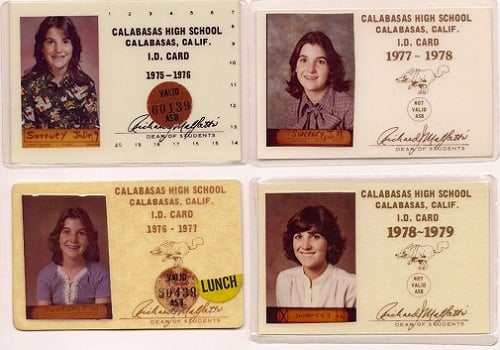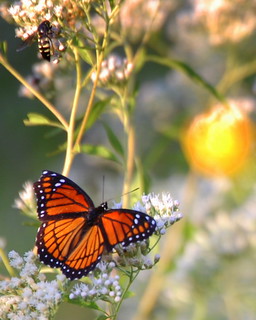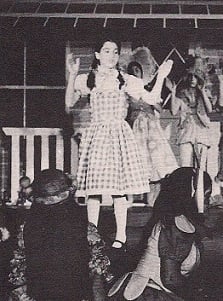Memories from a Good Public School

I grew up in southern California in the 1970s. My junior high school was located in Malibu Canyon—literally in the canyon. It backed up to a creek and stood quite alone on a long stretch of windy road between mountains.
My teachers were hip—straight out of college, and half of them home from the first batch of Peace Corps tours of duty. They wore bell bottoms and presented us slide shows from India, Uruguay, and the Andes Mountains.
In the 1970s, education underwent a genuine overhaul. Teachers were free to use their creativity to create classrooms unlike any my parents had experienced. On short supply were textbook, quiz, test, assessment structures. Sure, math still used a book, mostly, but every other class busted out of the brick and mortar into the world!
Our entire 7th grade, for instance, held a Renaissance Faire at the end of the school year during a full-fledged school day. It took us months to prepare. Kids worked in candle making shops and leather curing stands, there were jesters and gymnasts (me), food booths with grog and buns, and more! We had to barter our goods and skills to enjoy the labors/gifts/skills of others. We dressed up too. Such a memorable experience of the Renaissance era—I’ve never forgotten it.
 My science teacher took our class to the creek and wilderness behind the school every day for six weeks so we could observe nature, learn to identify everything in a 10 foot square, and then draw it representationally with accurate names for bugs, plants, fish, birds, butterflies and moths, dragonflies, oak trees, nettles (ouch!), and tadpoles. She also required us to catch and euthanize butterflies for our own butterfly displays. I remember running around the hills with my own handmade net catching them, and then putting them in a jar with nail polish remover, then sticking them with pins, and mounting them on Styrofoam.
My science teacher took our class to the creek and wilderness behind the school every day for six weeks so we could observe nature, learn to identify everything in a 10 foot square, and then draw it representationally with accurate names for bugs, plants, fish, birds, butterflies and moths, dragonflies, oak trees, nettles (ouch!), and tadpoles. She also required us to catch and euthanize butterflies for our own butterfly displays. I remember running around the hills with my own handmade net catching them, and then putting them in a jar with nail polish remover, then sticking them with pins, and mounting them on Styrofoam.
My language arts instructor taught us how to write songs from existing tunes to create original lyrics, and then we performed them. We made collages of our bodies on butcher paper and decorated them with clipped images and words, markers and stickers. We had an open classroom with another teacher and her students, and freely moved between the two each day. I actually learned more from the teacher who wasn’t my “official” teacher, as it turned out. She created a magazine to “publish” our poetry and short stories.
One social studies instructor taught us how to make Inca pottery. We made the pots, painted them according to the traditional designs, fired them, and then! And then!! We got to smash them with hammers into broken pieces.
The next night, that instructor buried our pots in a field in the back of the school, with sheets of cardboard to represent sedimentary layers, buried between the various eras of pottery. The next day at school, we divided into archaeological dig parties and dug up our pots, then dating them according to the layers. I’ll never forget being the last person to find our particular “dig site.” It was so frustrating to see other kids “find” their pots immediately.
I complained to Ms. Fagan: “Our pots are lost! They’re not where you said they’d be.”
She responded, “You are having the most authentic experience in the class. This is what it is actually like for archaeologists. They don’t know where the pots are buried.”
That comment stuck with me. I was having a real experience! Sure enough, we did find the spot where our pottery was buried after several more attempts, and how elated I felt then! We took the broken pieces back to class, reassembled them with special glue, labeled them, and displayed them the way a museum would. What an experience!
In high school, I had a teacher who taught us yoga, one instructor who had spent time in China taught us how to take “cooperative tests” (“Friendship first, competition second” hung as a banner in our classroom), another who introduced us to Beowulf and Grendel (the spoof on Beowulf) and gave us a chance to write our own spoofs or revisions.
My friends and I caught a vision for poetry through this English teacher and one day decided we wanted to make “tea and crumples” (I didn’t know the word was “crumpets”!) to celebrate British poetry. We invited our teacher and another English teacher as a treat. (The original teatime!) I wound up making corn muffins with diced apple in them to create our own unique “crumples.”

Playing Dorothy in The Wizard of Oz
Our high school had a robust theater department that not only made the sets from scratch, but all the costume design and costume construction were done by students as well. Students ran everything: light and sound boards, stage management, props, make-up, costumes. The director/teacher sat in the audience to watch our shows, leaving us to run everything. To this day, I feel such pride when I remember the theater productions.
I share all this because something got lost in education in the last 30 years. It’s become a system of assessment and targeted information goals (rather than multi-faceted exploration and immersion).
Home education offers you the chance to be that 1970s teacher who uses creativity and imagination to create an education. It really is better to have a medieval feast with your kids and their friends, for all of you to dress up in clothes you sewed yourselves, to eat traditional foods you prepared in your kitchen, to hold a pretend jousting competition in the living room…than to read about it and write a single paragraph narration.
It is worth taking the time to make a replica of the various styles of teepees and wigwams of Native American tribes in America than to simply look at pictures in a book.
Panning for fool’s gold yourself in a makeshift creek is better than watching a movie about panning for gold in 1849.
You can’t do these extravagant experiences every day. But if you do a few of them per year, your children will never forget them. I can’t tell you what textbooks I read in junior high, but I have never forgotten the teachers who brought learning to life for me, and I’ve never forgotten the experience of learning that they gave me. I have a fondness for ancient pottery even today because I experienced the value of design, the dig, and the rescue firsthand. I developed an affinity; I didn’t simply master a subject.
Go forth and be creative. Take time. Immerse. Plan. Prepare. Do! Execute and enjoy! Give your children a true, groovy education.


















What a wonderful story! Wow. Almost unbelievable. And yet, I have hope that we can find that balance again somehow. At school and at home. Thank you for sharing this.